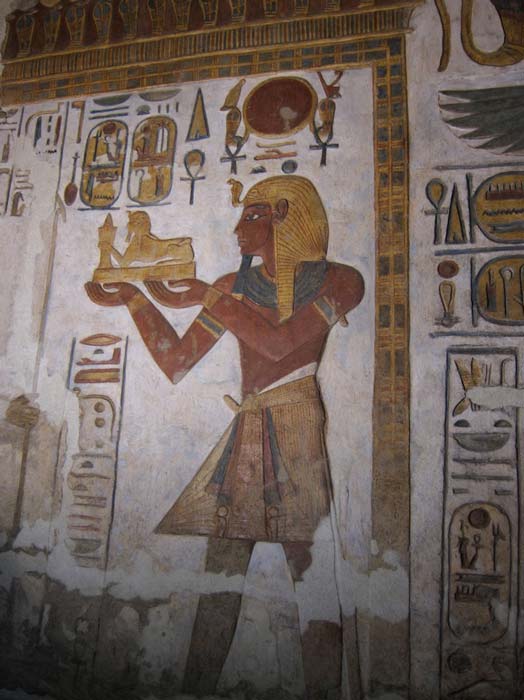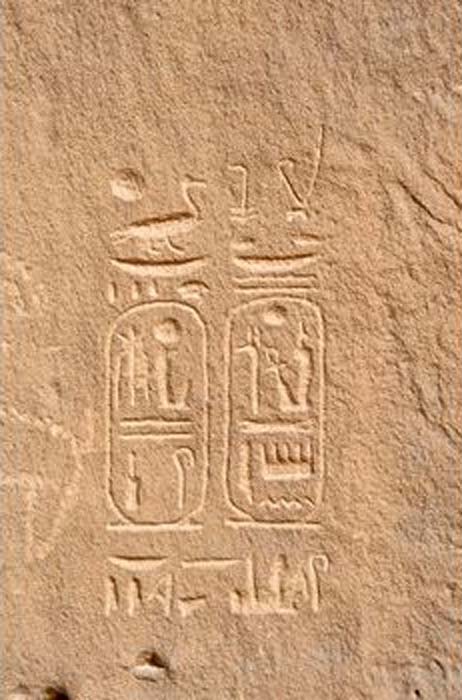
Ramses III in Arabia? Hunt for Egyptian Artifacts in Saudi Arabia Is On
Plans have now been finalized for a joint Egyptian-Saudi Arabian archaeological mission that will explore a long-distance trade route that likely connected ancient Egypt and the Arabian Peninsula. Excavations will center on a well-known archaeological site in northwestern Saudi Arabia known as Tayma, where evidence has emerged suggesting that Egyptian traders under the authority of 20th Dynasty pharaoh Ramses III were dispatched to acquire vital goods for his kingdom.
The new expedition was announced by famed Egyptian archaeologist Dr. Zahi Hawass, who recently met with officials from the Heritage Authority of the Saudi Ministry of Culture in Riyadh to discuss the upcoming venture. Hawass’s statement, issued on May 27 2021, explained that the archaeological mission would be launched under his leadership in November 2021, but that it would incorporate a substantial Saudi presence.
Since Hawass is no longer in charge of the Ministry of Antiquities in Egypt, it isn’t clear how much support the Ministry will be offering this mission. But the Saudi Heritage Authority is fully behind this exciting project, which they hope will spur greater interest in Saudi antiquities and heritage preservation efforts in general.

Egyptian archaeologist Dr. Zahi Hawass (on the left) back in 2009 during the visit of Barack Obama to the Pyramids. (Public domain)
Ramses III and Ancient Egypt on the Arabian Peninsula
In 2010, the Saudi Supreme Commission for Tourism and Antiquities (SCTA) announced they’d found a written inscription that established the presence of Egyptian traders on the Arabian Peninsula in the 12 th century BC. This inscription included the royal signature, or cartouche, of the pharaoh Ramses III, which could only have been left behind by his official representatives.
The inscription was discovered during ongoing excavations at the ancient desert oasis of Tayma, which 3,000 years ago was a bustling regional trading center. This cartouche was carved into a rock, along with other hieroglyphics that were of ancient Egyptian origin. These markings were presumably left behind by traders who’d been sent to the Arabian Peninsula under the authority of their pharaoh.
- Ramesses III, The Final Warrior Pharaoh: Savior of Egypt in Her Darkest Hour—Part I
- Ramesses III, The Final Warrior Pharaoh: Devastating Sea Peoples and Egypt’s Finest Hour—Part II
As the last pharaoh to head a powerful and united Egypt during the New Kingdom, Ramses III ruled the country from approximately 1192 BC to 1160 BC during the Late Bronze Age. During these years Egypt was besieged by invaders known only as the Sea Peoples, a group whose true identity and origin have remained a mystery to this very day.
The Sea Peoples repeatedly raided nations along the eastern and southern Mediterranean coast, and were believed to have been responsible for the collapse of several Late Bronze Age civilizations. Ramses III demonstrated impressive military prowess in fighting off these fierce seaborne warriors. With much effort, he was able to prevent them from conquering his kingdom.

Relief of Ramses III from the Khonsu Temple Sanctuary. (Asavaa / CC BY-SA 3.0)
Ramses III and His Search for Copper in Arabia
However, Egypt’s economy was severely weakened by the stressful and resource-intensive struggle to survive. Likely facing shortages of many critical supplies, Ramses III would have been highly motivated to seek out new trading partners wherever he could find them. If indeed he sent his trade representatives to the Arabian Peninsula, to the well-known marketplace city of Tayma, his desperation may have made this a logical move.
In the 12 th century BC, the region around Tayma was part of a nation known as Midian. The Midians welcomed traders from near and far to their country, and the trading center at Tayma was renowned throughout the region as a place where precious metals and other valuable goods of all types could be obtained.
In the case of the Egyptians, a papyrus recovered from ancient times revealed that Ramses III had in fact sent his representatives to another nearby nation in search of copper. The specific nation wasn’t named, but Midian is obviously a strong candidate, since the royal cartouche was found at Tayma and copper could have been easily obtained there.
The ancient Egyptians were expert copper manufacturers. They had been using copper for thousands of years by the time Ramses III came to power. They relied on this versatile metal to make agricultural tools (hoes, shovels, plows, etc.), craft worker’s tools (chisels, saws, knives), cookware, statues, ornaments, and weapons. They normally mined their own copper, but if the continuing warfare with the Sea Peoples had increased their need for this valuable metal, Ramses III might have had little choice but to seek out additional copper on the open market.

In 2010, Saudi archaeologists discovered a hieroglyphic inscription at Tayma mentioning the Egyptian pharaoh Ramses III and dating back to at least 1160. (Saudi Commission for Tourism and Antiquities)
A Fabulous Quest Finally Begins
Thanks to further archaeological investigations following the discovery of the Ramses III cartouche at Tayma, Saudi researchers from the SCTA were able to identify various stopping points along the ancient trade route that connected the Nile Valley in Egypt to the northwestern Arabian desert. Through a combination of fieldwork and desk research, they found that similar royal cartouches had been discovered at various locations in Egyptian territory and on the Arabian Peninsula.
Linking these locations together, they were able to trace the pathways that traders under the authority of Ramses III, and possibly other earlier and later Egyptian leaders, would have followed in their quest for valuable goods. When he first became aware of these Saudi discoveries back in 2010, Dr. Hawass proposed a joint Egyptian-Saudi archaeological mission to explore the Tayma site and other areas on the proposed trade route more thoroughly.
- Ritual Platform Discovered in Saudi Arabia, With Egyptian Artifacts
- The Vagaries of Trade in Ancient Egypt
While it took him a decade to arrange for such an expedition, Hawass is delighted that his dream will finally come to fruition. “The discovery of artifacts linked to Ramses III in Saudi Arabia came as no surprise, especially since King Ramses III sent merchants to acquire copper from a nearby region,” Hawass told the London-based Arabic language newspaper Asharq al-Awsat. “Thus, there is a strong chance of [finding further] Egyptian artifacts in the Arabian Peninsula."
In addition to the site at Tayma, excavations will also take place near an ancient city on the Red Sea coast that is believed to have been incorporated into the ancient trade route. The plan is to expand the expedition in the years to come if additional discoveries prove that this important trade route between ancient Egypt and the Arabian Peninsula really did exist.
Top image: Archaeologists have announced a mission to study the possibility of a long-distance trade route from Egypt to Arabia during the time of Ramses III. Source: MICHEL/ Adobe Stock
By Nathan Falde
















Comments
Zahi Hawass? "I do not believe in radar" when debating crazy Graham Hancock? That Zahi Hawass? or the Zahi Hawass who was sentenced to prison for a year for antiquities theft?
Which one?
Bully, Liar, Thief, Megalomaniac…..allegedly
Must be a seriously advantageous spot to dig.
Will the Saudi's come to regret it?